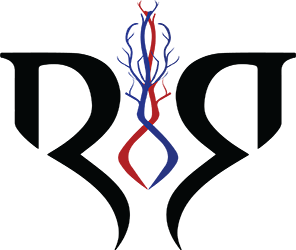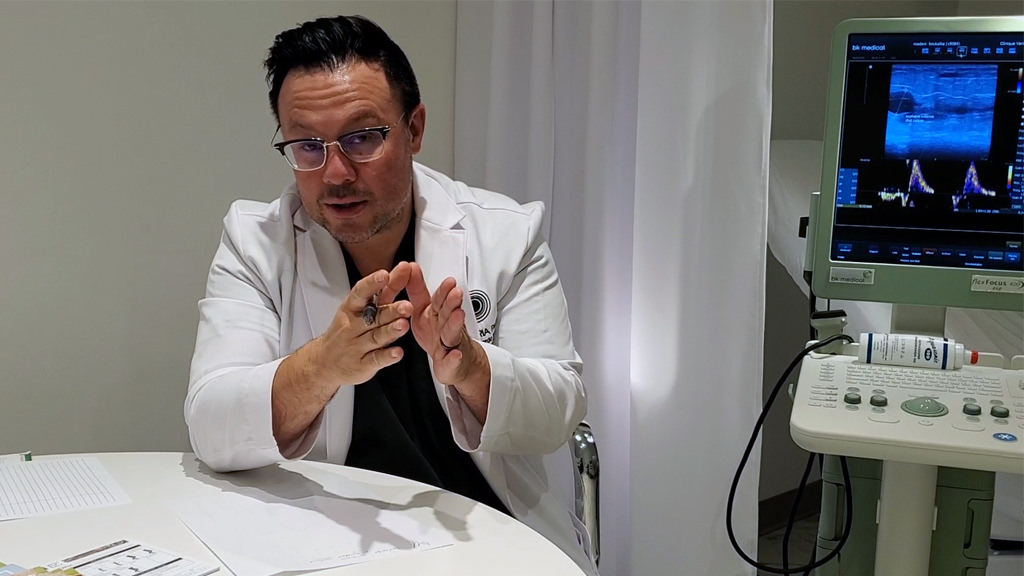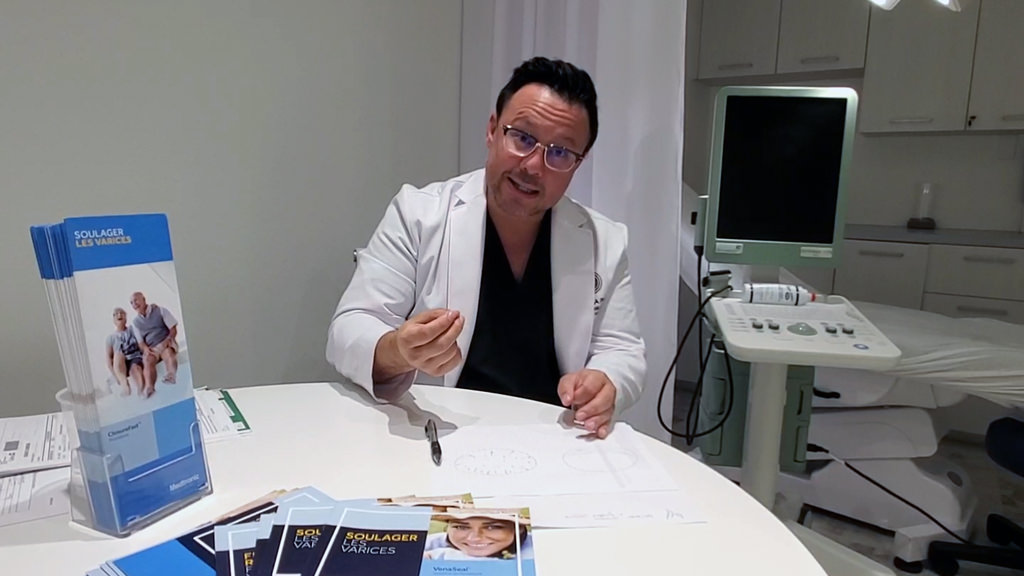Foam Sclerotherapy VS Conventional Sclerotherapy
Liquid sclerotherapy / Foam SclerotherapyExplanation of minor complications
Liquid sclerotherapyWhat are Varicose Veins?
Varicose veins are larger, swollen, or slightly raised veins that often appear on the lower limbs. They happen when the valves in the veins do not work properly, so the blood does not flow effectively.
What causes Varicose Veins?
- Heredity
- Hormonal factors such as pregnancy
- Obesity
- Prolonged standing
- Aging
How can I eliminate Varicose Veins?
-
Sclerotherapy
Sclerotherapy is a common treatment of mild varicose veins. It involves the injection of a solution into the veins to make them shrink. In ultrasound-guided sclerotherapy, ultrasound is used to visualize the underlying vein so the physician can better monitor and deliver the injection. Ultrasound-guided sclerotherapy is for slightly larger varicose veins. Varicose veins should disappear within 2-4 weeks of the injection.Patients undergo usually 3-5 treatments depending on the number and type of varicose veins they have. There is no downtime following sclerotherapy.
There is a variable rate of recurrence after sclerotherapy and it is important to follow the treatment plan proposed by your doctor at the initial consultation to obtain the best possible results.
-
Endovenous Ablation
Endovenous ablation is a common treatment of moderate to large varicose veins.If done with an energy device, it involves inserting a catheter into the vein being treated with heat being applied into the interior of the vein causing it to contract If done with the
VenaSeal procedure, it involves inserting a catheter which delivers small amounts of medical adhesive to close the vein.There is no downtime following VenaSeal ablation. The patient may feel some pain after energy based treatments which may warrant 24-48 hrs downtime.
The rate of recurrence is less then 10% after endovenous ablation and is equivalent to surgical ablation.
-
Surgery
Some severe varicose vein cases will need surgery (also known as stripping) at a hospital.
Will I be treated today?
Your initial appointment is a consultation to determine and discuss the right treatment for you. Usually this process takes up to your entire appointment, but occasionally we are able to agree on a treatment protocol and begin treatment on your first visit.
When can I expect to see the veins disappear?
Generally it takes three to six weeks after each treatment before patients see results. Most patients have noticed a 60% to 80% improvement in their treated veins. Complete elimination of tiny veins however, is rarely achieved. About 10% of patients have a poor result, with slight discoloration of the skin above the treated veins. The risk of recurrence once treated veins is only 5%. New veins can develop, however. Many patients have sclerotherapy treatments once a year to treat any new varicose veins. It is important to mention that if the patient has a truncal venous insufficiency (saphenous vein) and this insufficiency is not treated before injecting varicose veins, the risk of recurrence is almost 100%.
What are Spider Veins?
Spider Veins are small, dilated blood vessels that appear near the surface of the skin, and are sometimes referred to by their technical name of telangiectasias.
What are the side effects of sclerotherapy?
Expect inflammation and some bruising after treatment. For most patients, the treated areas will be red and inflamed for a few hours. There may be small bruising at the injection site for one to two weeks. Then, within three to six weeks after each treatment, the veins will gradually disappear.
Why should I wear compression stockings following sclerotherapy treatment?
Compression stockings make your treatment more effective by increasing the contact of the product on treated veins. They also reduce hyperpigmentation by preventing blood from returning to the inside of the treated vein. For all varicose veins, reticular veins and spider veins, the wearing of compression stockings is recommended for 3 to 21 days (depending on the size of the vessel). These socks apply pressure to the treated vein and keep the sclerotic vein closed, which may decrease the chances of repetition and varicose veins returning.
Rate of recurrence (reappearance of varicose veins)
The success rate of the procedure greatly depends on the expectations of the patient. For some, even a partial decrease in symptoms or varicose size will be described as a great success. For others, even slight persistence of telangiectasia will be experienced as a failure. As a rule of thumb, treatment of varicose veins has been successful enough to significantly reduce the size of the treated veins and in most cases even to make them disappear in the short term. The immediate success rate depends greatly on the pre-treatment assessment, ie the person who is treating has clearly identified the problem as a whole. This is the reason why in many cases a Doppler pre-intervention is required. The long-term success rate is more variable and there is little data from the medical literature on this subject. In general, it is better to consider that there is good chance that during your life some of your varicose veins will come back regardless of the treatment done, especially if initially they were numerous and large. Long-term follow-up after treatment helps to ensure longer-term success as it allows detection and treatment as the veins return. Wearing supporting socks for people who are standing or are not very active may also help to limit the reoccurrence of veins. Because it is largely hereditary, venous insufficiency should be seen as a long-term problem and people who want to see their results last over time should be motivated to pursue follow-up and treatment for life.
How can I prevent Varicose Veins?
- Stay Active.
- Walking and cycling can increase blood flow and circulation to prevent varicose veins.
- Watch your weight and diet.
- Excess pounds can add pressure to your veins. A low salt diet can prevent swelling caused from water retention.
- Wear Compression Stockings.





The images and/or videos are not presented as a guarantee of result. The results may vary. Patients gave their consent for the publication of images and/or videos.